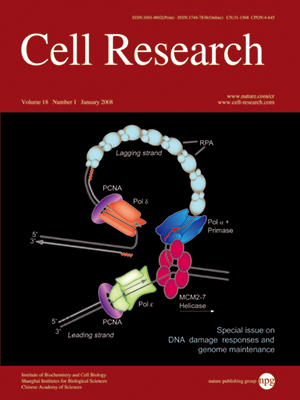
Volume 18, No 1, Jan 2008
ISSN: 1001-0602
EISSN: 1748-7838 2018
impact factor 17.848*
(Clarivate Analytics, 2019)
Volume 18 Issue 1, January 2008: 114-124
REVIEWS
The endless tale of non-homologous end-joining
Eric Weterings1 and David J Chen1
1Department of Radiation Oncology, Division of Molecular Radiation Biology, University of Texas Southwestern Medical Center, 2201 Inwood Road, Dallas, TX 75390-9187, USA
Correspondence: David J Chen(david.chen@utsouthwestern.edu )
DNA double-strand breaks (DSBs) are introduced in cells by ionizing radiation and reactive oxygen species. In addition, they are commonly generated during V(D)J recombination, an essential aspect of the developing immune system. Failure to effectively repair these DSBs can result in chromosome breakage, cell death, onset of cancer, and defects in the immune system of higher vertebrates. Fortunately, all mammalian cells possess two enzymatic pathways that mediate the repair of DSBs: homologous recombination and non-homologous end-joining (NHEJ). The NHEJ process utilizes enzymes that capture both ends of the broken DNA molecule, bring them together in a synaptic DNA-protein complex, and finally repair the DNA break. In this review, all the known enzymes that play a role in the NHEJ process are discussed and a working model for the co-operation of these enzymes during DSB repair is presented.
Cell Research (2008) 18:114-124. doi: 10.1038/cr.2008.3; published online 1 January 2008
FULL TEXT | PDF
Browse 1908


